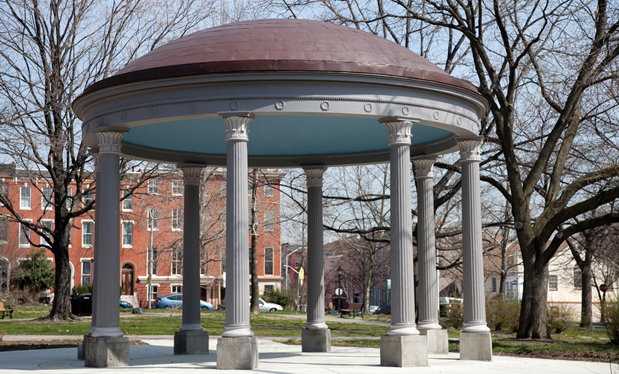Although no English sovereign has sought to exercise control over the U.S. since the conclusion of the American Revolution in 1781, a common law doctrine carried over from England centuries ago still survives in some form in most states. Much to their surprise and torment, contractors and architects doing public work have learned they can be sued for alleged defective construction many years after work was completed and statutes of limitation and repose have expired.
In a 2012 case that grabbed the attention of the construction community in Connecticut and elsewhere, the Connecticut Supreme Court issued a unanimous, 39-page opinion holding the state of Connecticut could pursue claims against construction contractors, architects and others for an unlimited period of time after completion of construction regardless of expiration of Connecticut's six-year contract statute of limitations and seven-year statute of repose.
In the case State v. Lombardo Brothers Mason Contractors, the Connecticut Supreme Court made clear Connecticut adheres to the doctrine nullum tempus occurrit regi. Translated from Latin as "no time runs against the king," this doctrine, commonly referred to as nullum tempus, means statutes of limitation do not run against the state and its agencies. The doctrine is somewhat similar to the doctrine of sovereign immunity that shields states and other government entities from lawsuits unless there has been an express waiver of sovereign immunity by legislative enactment.
The rationale
The contemporary rationale for the nullum tempus doctrine was expressed in earlier cases cited by the Connecticut Supreme Court in its Lombardo Brothers opinion.
In the 1886 case United States v. Nashville, Chattanooga & St. Louis Railway Co., the U.S. Supreme Court said: "It is settled beyond doubt or controversy—upon the foundation of the great principle of public policy, applicable to all governments alike, which forbids that the public interests should be prejudiced by the negligence of the officers or agents to whose care they are confided—that the United States, asserting rights vested in them as a sovereign government, are not bound by any statute of limitations, unless Congress has clearly manifested its intention that they should be so bound."
Similarly, in the 1938 case Guaranty Trust Co. v. United States, the U.S. Supreme Court stated "the rule nullum tempus rests on the public policy of protecting the domestic sovereign from omissions of its own officers and agents whose neglect, through lapse of time, would otherwise deprive it of rights."
Although the doctrine currently has limited practical federal applicability because of congressional enactments that have the effect of waiving the doctrine, the Lombardo Brothers case vividly demonstrates the doctrine continues to have plenty of vitality in suits filed by state and local government agencies.
The Lombardo Brothers decision
A striking aspect of the Connecticut Supreme Court's decision in the Lombardo Brothers case was the court's holding that contract language indicating the parties had contractually stipulated to adhere to a statute of repose was to be given no effect. The court ruled even if the state agrees in its contract to adhere to the statutes of limitation and repose, such agreements are ineffective because public officials lack the authority to waive nullum tempus on the state's behalf. The court held the state only can waive its immunity from statutes of limitation and repose by enacting a statute providing statutes of limitation and repose apply to the state.
In the Lombardo Brothers case, the state of Connecticut hired design and construction management firms to build a law library at the University of Connecticut. Design of the new library began in 1992, and construction commenced in 1994. The library was intended to be of high quality and last 100 years or more. The state hired Gilbane Inc., Providence, R.I., as its construction manager to work with the architect during the later design stages.
Construction was completed in 1996. Water intrusion problems were experienced the same year. Numerous contractors who had worked on the building were notified and attempted repairs. Unfortunately, the water intrusion problems continued and were progressive. Beginning in 2000, the state retained forensic engineers to investigate the full extent and likely causes of the problem. The engineers determined there were numerous defects in design and construction. Based on their reports, the state undertook corrective work costing more than $15 million.
In March 2008, 12 years after substantial completion of the project, the state of Connecticut filed suit against 28 contractors, designers, suppliers and construction professionals seeking reimbursement of the $15 million. All 28 defendants raised the defense that the state's claims were barred by expiration of Connecticut's six-year contract statute of limitations and seven-year statute of repose beginning from the date of substantial completion.
Because some statutes of limitation may not begin until the claimant discovers its claim, most states, including Connecticut, also have enacted so-called statutes of repose, setting forth an absolute time limit after substantial completion of a construction project in which a suit must be filed or the claim is barred even if the suit is brought soon after the claim or injury is discovered. One legal issue in the Lombardo Brothers case and other cases was whether the nullum tempus doctrine would apply to statutes of repose as well as statutes of limitation.
The trial court sided with the defendants and dismissed the state's suit. The state appealed to the Connecticut Supreme Court.
The state argued that based on the nullum tempus doctrine, it was immune from statutes of limitation and repose and all its claims could be prosecuted against the defendants regardless of the passage of time. The defendants argued the Connecticut Supreme Court should abolish nullum tempus because it is a harsh and antiquated rule that serves no just or useful purpose in a modern legal system.
Contrary to the trial court, the Connecticut Supreme Court found the rule of nullum tempus was well-established and clear cut in Connecticut. The court stated a suit by the state or a subdivision of the state was not barred by an otherwise applicable statute of limitations or repose even though there had been few previous Connecticut cases that did not specifically reference the phrase nullum tempus. The court made clear that whether nullum tempus was sound public policy or should be abolished was a decision that rested solely and exclusively in the hands of the state legislature and not the court.
Gilbane's additional argument
Gilbane presented an additional argument: The state had agreed in its contract, which had been executed by Connecticut's chief deputy commissioner of public works, to waive nullum tempus by including a provision indicating Connecticut's statute of repose would apply to claims asserted against Gilbane.
The applicable portion of Gilbane's contract stated: "The services performed pursuant to this contract shall be considered professional work to which any statutory period of repose then otherwise applicable to professional design work under Connecticut law shall apply."
The Connecticut Supreme Court rejected Gilbane's argument, holding that to the extent the contract provision purported to waive the state's immunity from the statute of repose, the provision was invalid because the chief deputy commissioner lacked the authority to waive the state's immunity. The key here is a contract provision indicating a Connecticut public entity has agreed to be bound to a statute of limitation or repose will not be enforceable in the absence of specific legislative authority. Government officials cannot waive nullum tempus, contractually or otherwise, without legislation specifically authorizing them to do so.
Other states
Connecticut's view on nullum tempus is amid the most wide-sweeping and all-encompassing among the states because it applies to the state, state agencies and political subdivisions such as school districts and local municipalities. Although there is little consistency among states regarding the application of nullum tempus, the doctrine survives to a surprising extent in most states. A common starting point in many court decisions is the doctrine applies unless there is a statute indicating the government entity is subject to a statute of limitations. Only South Carolina and West Virginia by statute and Colorado and New Jersey by court decision have entirely abolished nullum tempus.
Some states apply nullum tempus only to claims brought by the state and state agencies and apply different rules when a suit is brought by a political subdivision or local government unit.
Some states attempt to distinguish between claims brought by government units seeking to enforce a government right versus what is classified as a proprietary claim. Nullum tempus would shield the governmental entity from the statute of limitations when exercising a governmental function but not when pursuing a proprietary claim. In a few states, the government-proprietary dichotomy applies to all claims initiated by the public entity, but in most states the distinction applies only to local governmental units.
What about schools?
In most states, boards of education and school districts are state agencies established by statute, and school construction has been considered a governmental function because education and construction of schools is mandated in state constitutions and legislation.
Based on the nullum tempus doctrine, courts in Kansas, Pennsylvania and Washington, for example, have issued rulings in school construction cases that claims against contractors, architects and others are not subject to a statute of limitations defense.
On the other hand, the Supreme Court of Alabama in the 1999 case Board of School Commissioners of Mobile County v. The Architects Group Inc., which pertained to a leaky roof system at an elementary school, ruled that though statutes of limitation do not apply to the state, nullum tempus does not apply to state political subdivisions, so the statute of limitations applies to municipal corporations and other public subdivisions of the state, including counties and boards of education.
Unlike the Connecticut Supreme Court's ruling, Pennsylvania's Commonwealth Court ruled in the 2011 case Selinsgrove Area School District v. Lobar that contract language between the school district and contractor indicating when the statute of limitations would commence was sufficient to constitute a waiver of nullum tempus.
In this case, the school district entered into a contract with Lobar Inc., Dillsburg, Pa., April 1, 1996, for the construction of Selinsgrove Area Intermediate School. The school's roof system experienced leaks, and in May 2012, after the applicable statutes of limitations had expired, the school district filed suit against Lobar, and the roofing contractor was brought into the suit.
Based on contract documents, the prime contractor and roofing subcontractor succeeded in getting the suit dismissed based on expiration of the statute of limitations despite Pennsylvania's adherence to nullum tempus.
This case may be particularly helpful to other contractors because the contract language cited by the court in support of its decision came from a widely used document: The American Institute of Architects (AIA) Document A201—General Conditions of the Contract for Construction. The contract provisions relied upon by the court were standard provisions in AIA A201, which define when the statute of limitations starts if a claim arises before substantial completion or when the statute of limitations states whether a claim arises subsequent to substantial completion.
The court found "[s]uch clear and unambiguous language clearly demonstrated the intent of the contracting parties to give effect to the applicable statute of limitations, carefully defining the starting point thereof, and thereby negating the applicability of the doctrine of nullum tempus."
Government vs. proprietary functions
Although Pennsylvania and most states consider school construction to be a government function such that nullum tempus would apply, in the 1992 case Altoona Area School District v. Campbell, the Pennsylvania Commonwealth Court distinguished between school construction cases where a school district was asserting claims arising out of its constitutionally and statutorily mandated duty to construct and maintain schools and when the school district was constructing a library. Because the district was authorized by law to enter into a contract for library construction but was not obligated to do so, the district was subject to the statute of limitations.
Kansas applies a distinction between proprietary activities versus governmental functions. Kansas' approach to nullum tempus was discussed by the Kansas Court of Appeals in the 2007 case Newman Memorial Hospital v. Walton Construction Company.
Kansas has a statute providing statutes of limitation apply to claims of the state, any political subdivision or any other public body arising from any proprietary function or activity. Government immunity applies to claims arising out of a government function based on the rationale that "public rights and causes of action should not be lost by the acts or admission of public officers."
The distinction between government and proprietary functions is fuzzy at best. Kansas courts have sought to define the difference by describing government functions as those that are performed for the general public for the common welfare for which no compensation or particular benefit is received, and proprietary functions are exercised when an enterprise is commercial in nature; usually carried out by private individuals; or is for the profit, benefit or advantage of the government unit conducting the activity.
In the Newman Memorial Hospital case, the Kansas Court of Appeals did not apply the doctrine of nullum tempus because Kansas considers the construction and operation of hospitals as a proprietary function and the county hospital's construction and leasing of a medical office building was a proprietary function.
The case concerned alleged deficiencies in the design and construction of a medical office building by a public county hospital. Newman Memorial Hospital, Emporia, Kan., was organized and exists pursuant to a Kansas statute that allowed but did not require the establishment of a hospital. Construction of the medical office building was completed in late February or early March 1997. Water leakage was experienced as early as July 17, 1997.
The county hospital filed suit July 31, 2002, beyond the longest applicable statute of limitations.
The medical office building was financed by the sale of taxable revenue bonds and the building's purpose was to provide needed health care in the county and surrounding communities. Arguing that providing health services is an essential government function and referring to a state statute stating the lease of real property to provide office space necessary for the performance of medical services shall be construed to be a government function, the hospital won at the trial court. The court held that as a county public hospital, Newman Memorial Hospital was not subject to statutes of limitation because its construction and leasing of the medical office building was a government function.
When reversing the trial court's decision, the Kansas Court of Appeals cited two cases in which the Kansas Supreme Court ruled that when a governmental entity operates a hospital it acts in a proprietary manner. In reaching its decision, the court relied on the fact that construction of a medical office building was an activity typically undertaken by private entities and the activity was commercial in nature.
New York is another state that uses the governmental versus proprietary distinction to determine whether nullum tempus will apply. If the public entity is exercising uniquely sovereign rights, the doctrine applies. Nullum tempus will not apply when a state agency asserts ordinary property rights.
In a 1995 case decided by Kings County Supreme Court, New York City Transit Authority v. New York Historical Society, the New York City Transit Authority was seeking to recover possession of certain historical photographs and materials contained in three collections held by the New York Historical Society. The photographs and materials were given to the historical society and recorded as gifts in 1943, 1950 and 1981. The suit was not brought until many years later. The court did not apply nullum tempus because the state agency was not exercising uniquely sovereign powers but rather ordinary property rights.
In a 2009 case involving fill-and-dredge regulations in wetlands arising from construction of a golf course, the New Hampshire Supreme Court in the case of State of New Hampshire v. Lake Winnipesaukee Resort, LLC, ruled nullum tempus applied to exempt the state from applying its three-year statute of limitations.
The general contractor argued the New Hampshire Supreme Court should abolish nullum tempus. The court found New Hampshire had codified the principle of nullum tempus 150 years earlier in claims pertaining to public highways and the possibility for "public rights, revenues and property [to be lost or injured] by the negligence of public officers" still existed.
What should you do?
If you are involved in public construction contracts at the state and local levels, be aware that depending on state law and court decisions in the jurisdiction where you work, you may be liable for an indefinite period and should take this into account during the bidding process. Before bidding on a public project, seek to learn whether the government entity with whom you may be contracting is subject to a statute of limitations or repose. An examination of the state statutory and case law on a state-by-state basis is needed to make that assessment.
In addition, seek to include a contract provision indicating how statutes of limitation are to be applied. Such provisions, similar to provisions found in AIA A201, may prove to be helpful if the public entity seeks many years later to argue the government entity is not subject to any statute of limitations or repose based on the nullum tempus doctrine.
Most important, all segments of the construction industry should work together to cause state legislatures to enact legislation so the same time requirements governing suits brought by private parties apply to governmental entities.
Stephen M. Phillips is a partner with Atlanta-based law firm Hendrick, Phillips, Salzman & Flatt.
For an article related to this topic, see: "Watching the clock," July 2011 issue



